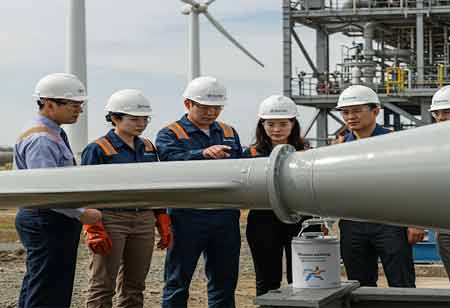Thank you for Subscribing to Construction Business Review Weekly Brief
Specials
- Apartment and Condominium Contractors Canada
- Decking Canada
- Architectural Glass Europe
- MEP APAC
- Construction Saudi Arabia
- German Apartment and Condominium Contractors
- Construction Law APAC
- Outdoor Construction
- Foundation Construction Canada
- MEP Canada
- Kitchen and Bath
- Cold Storage Construction APAC
- Precast Concrete Europe
- Construction Staffing Europe
- Pre-Construction Services
- Flooring System APAC
- Scaffolding Canada
- Swimming Pool Construction Canada
- Construction Management Canada
- Cold Storage Construction Canada
- Flooring Systems Europe
- Residential Construction
- Concrete Canada
- Construction Cladding Europe
- Construction Cladding APAC
- Concretes, Aggregates and Construction Materials APAC
- Concretes, Aggregates and Construction Materials Europe
- Commercial Contractors Europe
- Commercial Contractors APAC
- Dummy
- Construction Insulation, Coating and Waterproofing
- Construction Management APAC
- Landscaping Canada
- Construction Coating Europe
- Construction Tech Startups Europe
- Insulation Services Europe
- Mechanical Contractor Canada
- Mould Remediation and Testing Europe
- Swimming Pool Construction APAC
- Building Sealing Solutions Europe
- Construction Engineering Services
- Mechanical Electrical and Plumbing
- Roofing Systems Europe
- Architectural Glass APAC
- Startups APAC
- Construction Forensic and Owners Representative
- Flooring System
- Waterproofing APAC
- Wall Systems
- Safety and Compliance Europe
- Construction Equipment
- Modular and Prefab Construction
- Architectural Glass
- Construction MENA
- Construction Demolition and Recycling Europe
- Modular Construction Europe
- Construction Interiors
- Steel Building APAC
- HVAC
- Doors and windows
- Modular Construction APAC
- Building Information Modeling APAC
- Sustainable Construction APAC
- Building Restoration and Maintenance
- Commercial Contractors
- Specialty Construction
- Construction Engineering Canada
- Construction Engineering MENA
- Modular Construction Canada
- Construction Demolition Canada
- Roofing and Siding Systems
- Construction Latam
- Construction Staffing
- Roofing Systems APAC
- Construction Consulting
- Steel Building Europe
- Construction Demolition and Recycling APAC
- Safety and Compliance APAC
- Concretes, Aggregates and Construction Materials
- Construction Cladding
The Future of dry Construction Technology
With an increasing commitment to sustainability in construction, dry construction technology involving re-manufacturing, lowmaintenance, durability, recycling, and reuse is touted to be the future of DCT best practices.

By
Construction Business Review | Monday, October 21, 2024
Stay ahead of the industry with exclusive feature stories on the top companies, expert insights and the latest news delivered straight to your inbox. Subscribe today.
With an increasing commitment to sustainability in construction, dry construction technology involving re-manufacturing, lowmaintenance, durability, recycling, and reuse is touted to be the future of DCT best practices.
Today’s discerning buyers have high expectations of product quality, timely completion, and service from the real estate firms. Add hurdles of rising cost inflation to this, and it is clear that fast and significant transformation in real estate construction practices is the need of the hour. Some firms have taken up this challenge head-on by rolling out revolutionary global practices to the real estate sector. One of the major practices is the ‘Dry Construction Technique’ (DCT), which helps create high-quality, low-cost, time-effective, and ecofriendly projects – a significant selling point today.
Dry Construction Technique (DCT) is the utilization of innovation to mitigate water use and the effect of real estate on the environment. DCT involves lightweight construction of interior walls, ceilings, and floors, using plastered or microfiber board that is joined at the time of deploying. Apart from the drywall and ceiling, the façade is done with Aluminum Composite Panels (ACP) instead of brickwork and plaster. DCT is much lighter than the conventional brick and cement work and enables up to 70 percent saving of construction time. The wall’s width constructed with DCT is only 80 mm in comparison to the 200 mm standard walls made of brick.
For large-scale projects, most of the development is covered by a network of roads made with paving blocks. These blocks are fixed on dry crush sand, which does not need the use of water. Also, during monsoons, paving blocks let rainwater percolate into the ground, which ultimately increases the groundwater table. Lightweight DCT developed from a need to reduce the mass without compromising on the structural strength. Its increasing use is primarily owed to its advantages like shorter construction timelines, better building mechanics, good economics, superior sound insulation, and fire-protection. Some of its other advantages include ease of repairs, renovation, and maintenance.





